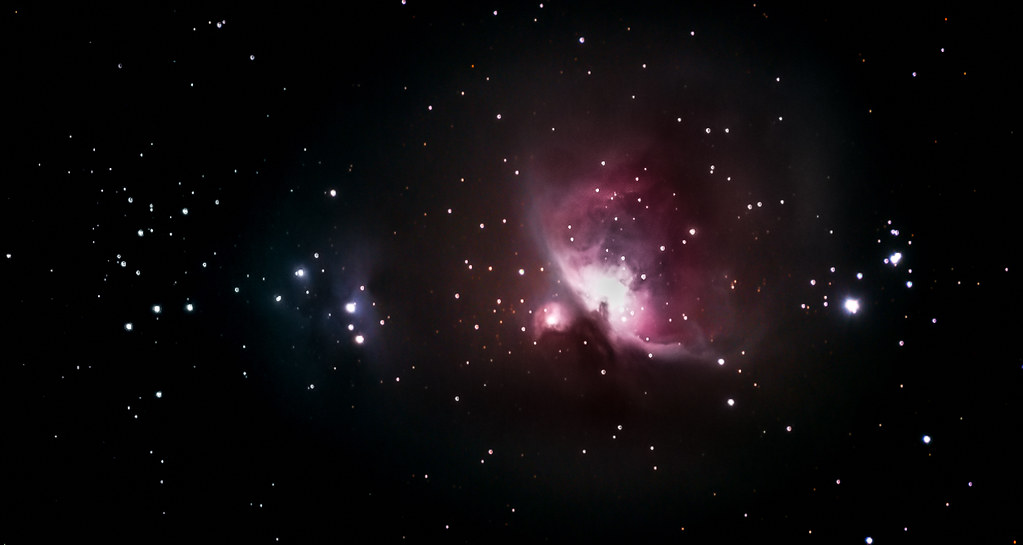- Messages
- 1,888
- Name
- Joel
- Edit My Images
- No
Hi all,
Last night, after months of studying Astrophotography and specifically Deep Sky Object (DSO) Photography I took my first photograph of Messier 42, also known as the Orion Nebula. It is 1,344 light years from Earth and is estimated to be 24 light years across. An estimated 1,000 stars are being born here. You can also see the Running Man on the left of the image. It's a total of 50 minutes worth of exposure time and took 8 hours to process.
 Orion Nebula by Joel Spencer, on Flickr
Orion Nebula by Joel Spencer, on Flickr
Last night, after months of studying Astrophotography and specifically Deep Sky Object (DSO) Photography I took my first photograph of Messier 42, also known as the Orion Nebula. It is 1,344 light years from Earth and is estimated to be 24 light years across. An estimated 1,000 stars are being born here. You can also see the Running Man on the left of the image. It's a total of 50 minutes worth of exposure time and took 8 hours to process.
 Orion Nebula by Joel Spencer, on Flickr
Orion Nebula by Joel Spencer, on Flickr
